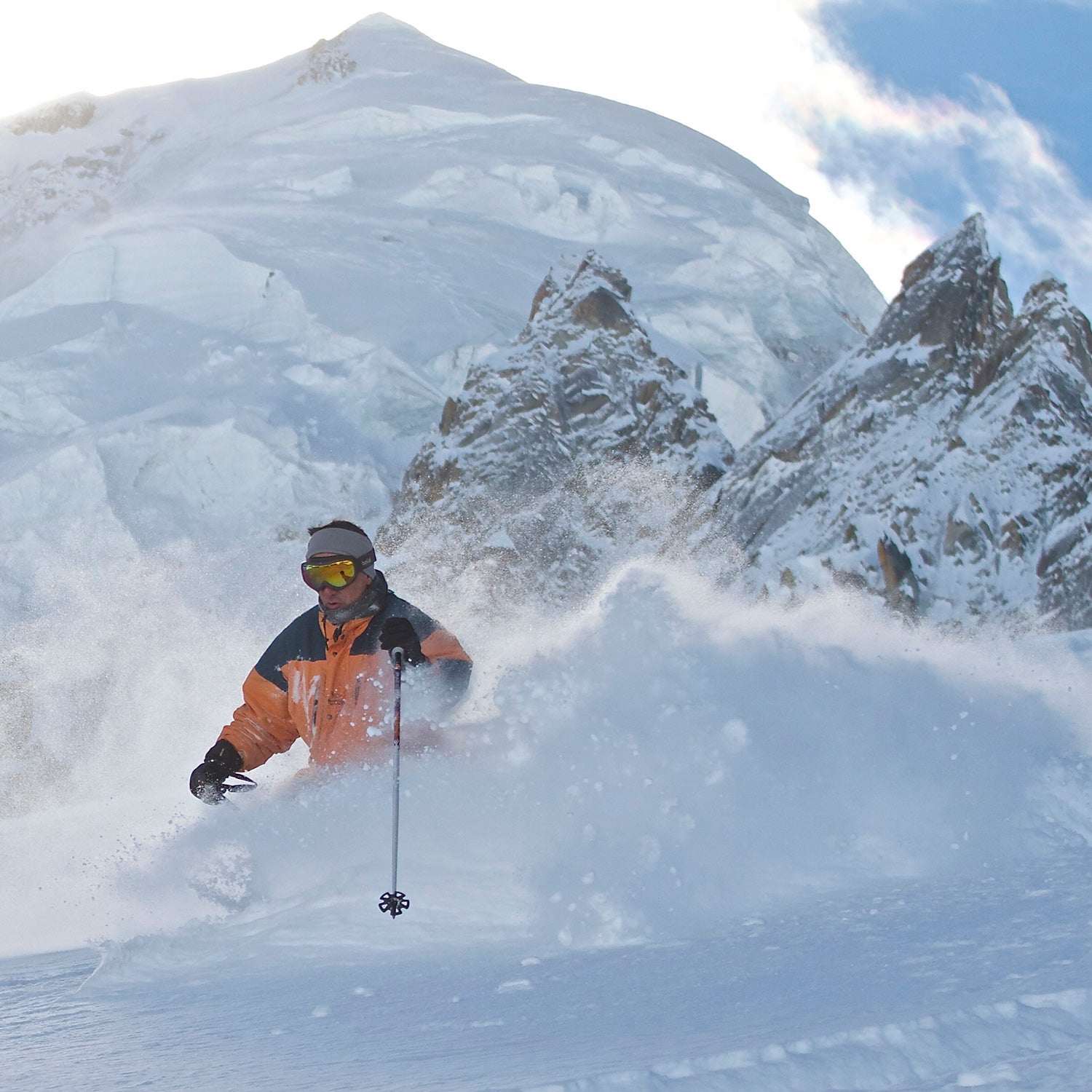One of the big misconceptions about skiing Europe is that it’s outrageously expensive, but it doesn’t have to be. Here’s a breakdown of all the ways you can save while shredding in the Alps this winter.
Go Now
Because the exchange rates are in your favor: The dollar hasn’t been this strong against the euro in more than ten years.
Book a Ticket
There’s no getting around it: the flight will cost some money. But think about it this way: it’s really not that much cheaper for East Coaster to head to the Rockies than to cross the Atlantic. Using a low-cost airline like , a flight from Washington D.C. to Paris, an easy train ride to most French resorts, starts at at $530—about what you would pay to get to Jackson or Aspen.
Pick the Right Mountain
The real deals start when you arrive in the Alps. To get the biggest savings, pass on big name resorts like Val d’Isère and Zermatt and try off-the-beaten path destinations like and , France, or and , Switzerland. While you won’t find swanky sushi bars or a rocking après scene, you will find crowd-free slopes, miles of off-piste terrain, and charming alpine villages that haven’t changed much in hundreds of years—all for the right price. In La Grave, the Skier’s Lodge offers six days of guided skiing, accommodations, two meals a day, and avalanche gear for $1,268.
You can also save big by heading to Italy, home to some of the Alps’ best and most budget friendly resorts. A five-day lift ticket in , an under-the-radar freeride mecca, will set you back just $163, and five nights of accommodation at will run you about $300.
Grab the Right Pass
Don’t forget that some season ski passes in the U.S. include days at international resorts. The scores you five days of skiing in , Switzerland. In Colorado, Monarch Ski Area’s season pass delivers unlimited days at a handful of small Austrian, German, and Spanish resorts. And the 11-resort pass nets two days at Chamonix.
But don’t worry if you don’t have a line on free days with your current pass. In general, lift tickets in the Alps tend to be cheaper and offer more value than their American counterparts. Consider this: A five-day pass to costs $278 and offers access to 30,000 acres of skiing across the valley’s six mountains—Brévent, Flégère, Grand Montets, Le Tour, Les Houches, and the Aiguille du Midi—as well as days at partner resorts Verbier, Megève, and Courmayeur. Compare that to $660 for five days at .
Take the Train
Forget driving, it’s expensive. Travel by rail. It's convenient, since trains access most villages in the Alps. Purchase a , a remarkably affordable and efficient way for snow-lovers to ski Europe. We suggest buying the two country Regional pass, which offers four travel days over two months in two bordering countries—say, Switzerland and Austria—for $283. Earn an extra travel day if you buy a pass before December 30, 2015. Once in Europe, consider taking overnight trains to maximize ski time and save on a day of lodging.
Get Smart
Research when local school holidays occur and avoid them, since rates surge during these times. Many villages across the Alps host weekly farmer’s markets throughout the winter where you can pick up dried meats, cheeses, and produce, which, when paired with a baguette, make a perfect packed lunch. Bed and breakfasts in the Alps are often affordable and deliver great value and huge charm. In posh , $95 bucks a night scores you a room and breakfast at a three-star B&B in the heart of the village’s medieval core.


